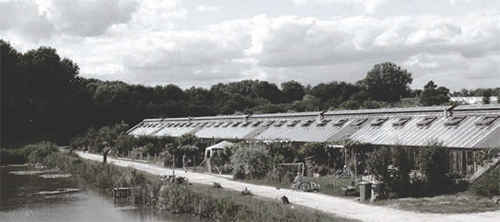The UK spent 17% more on food and drink in 2012 than in 2007 despite buying 4.7% less and saving 5.6% on food budgets by purchasing less expensive products. The lowest income group spent 22% more over the same interval and are buying 5.7% less and economising with less expensive substitutes by a further 1%. In Scotland the average spend per person on food is £41.44 per week. The increase in food costs are expected to continue according to the United Nations Food and Agriculture Organisation, who project a rise of between 10% and 40% with Prof. Benton of the University of Leeds projecting that prices “will at least triple”. The effects of rising costs are already being reported by The Trussell Trust, who run over 400 food banks across the UK. Recently published figures show that almost 350,000 people have claimed at least three days emergency food from their stores in the last year. This number has increased from just over 61,000 since 2010.
Scotland has a history of agriculture farming, particularly on the west coast where crofting formed a large percentage of the household required income. Crofters were afforded several acres of arable land near their settlement and given access to communal grazing known as out field land, traditionally held within community ownership. This form of cultivation was formally banned following the failed Jacobite uprising in 1745, but continued in the Highlands and was formally recognised in law after the Napier Commission concluded in 1886. Outside the Highland Line, the predominant form of subsistence agriculture were Planned Towns and Villages where similar land arrangements were employed but the built form varied signifi cantly from the Highlands.
Currently the UK grows around 60% of the vegetables consumed within its borders but only 10% of its fresh fruit (DEFRA, 2010) making the UK susceptible to price fl uctuations in international markets. The price of oil plays a signifi cant role in the transport, storage and manufacturing of food stuffs, which constitutes one of the main arguments for localism within production.
According to the UN local food production is a key element to achieving sustainable food systems (United Nations, 2013). Localism focuses production and the consumption of an entity within an immediate area, be that across the expanse of a township, county, region or country. In terms of food production localism is most commonly linked to the opinion that food miles should be reduced, which would have several desirable outcomes. Firstly, it limits the requirement for a large, expensive (both in monetary and carbon cost) distribution and storage network, reducing the ecological cost of the product. Research in the 1970s illustrated that the energy required to make food available to the public was ve times the value of the energy contained in it (Vale, 2009). Secondly, it concentrates the economic exchange, allowing for growers to sell directly to the consumers, automatically benefi tting both parties. The third reason relates to the eff iciency of the growing of food itself. Studies have shown that farms smaller than two hectares are between two and ten times as eff icient in terms of fi nancial return per acre (United Nations, 2013). It is suspected that this is due to the biodiversity that is typically exhibited at this scale of farming. Another reason is thought to be motivational; individuals or communities are regularly working for their direct benefi t.

